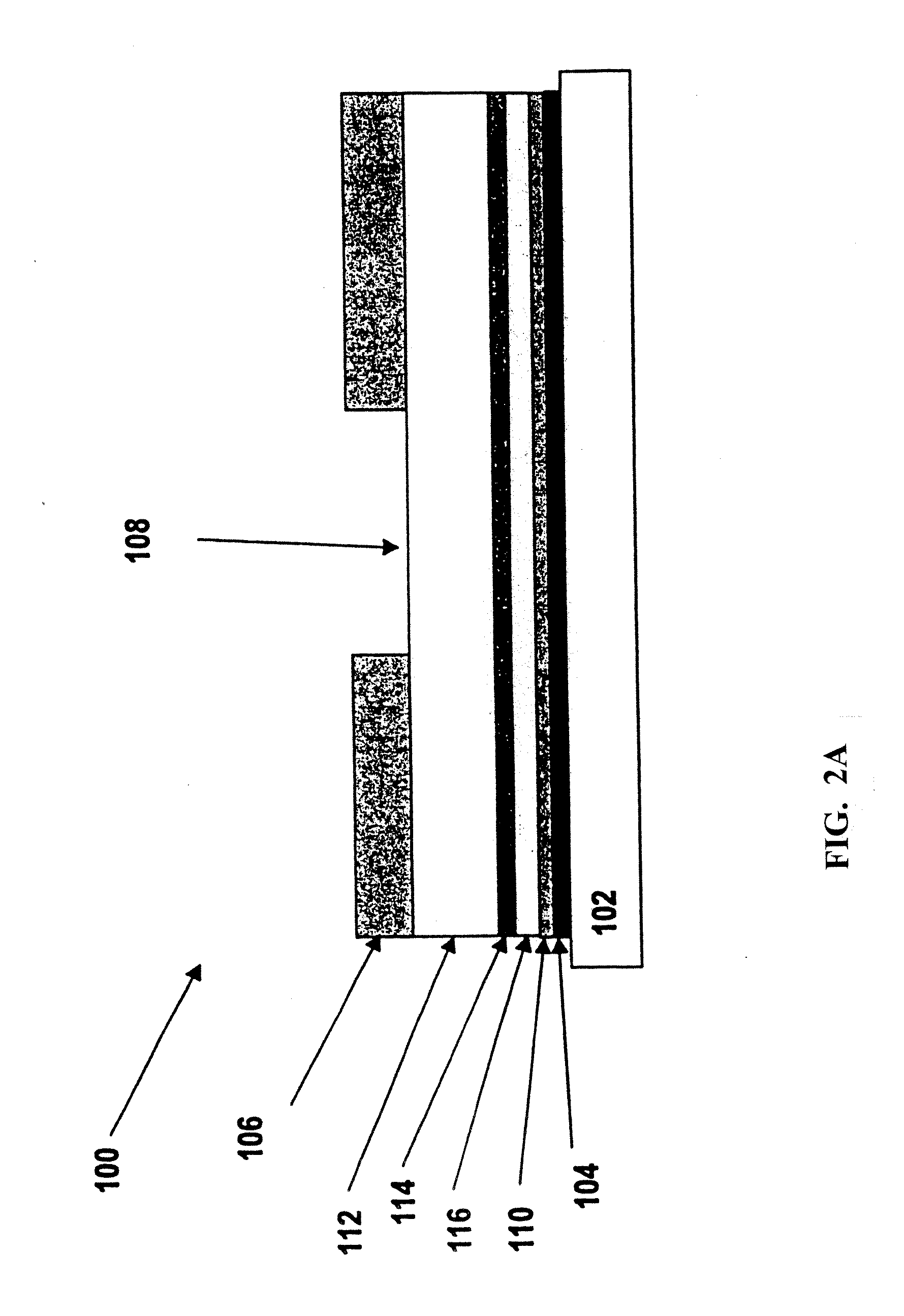Analyte sensors comprising blended membrane compositions and methods for making and using them
- Summary
- Abstract
- Description
- Claims
- Application Information
AI Technical Summary
Benefits of technology
Problems solved by technology
Method used
Image
Examples
example 1
Synthesis and Characterization of Illustrative Linear Polyurea / Polyurethane Polymers
[0163]The disclosure provided herein in combination with what is known in that art confirms that functional linear polyurethane / polyurea polymers can be made from a number of formulations, for example those disclosed in U.S. Pat. Nos. 5,777,060; 5,882,494; 6,642,015; and PCT publications WO 96 / 30431; WO 96 / 18115; WO 98 / 13685; and WO 98 / 17995, the contents of which are incorporated herein by reference. Certain of these polymers provide formulations useful as a glucose limiting membrane (GLM).
[0164]A standard GLM formulation used to make embodiments of the invention comprises:
[0165]25 mol % polymethylhydrosiloxane (PDMS), trimethylsilyl terminated, 25-35 centistokes;
[0166]75 mol % polypropylene glycol diamine (Jeffamine 600, a polyoxyalkyleneamine with an approximate molecular weight of 600); and
[0167]50 mol % of a diisocyanate (e.g., 4,4′-diisocyanate).
This standard GLM formulation and processes for i...
example 2
Synthesis and Characterization of Illustrative Branched Acrylate Polymers
[0169]The disclosure provided herein in combination with what is known in that art confirms that functional branched acrylate can be made from a number of formulations. In one example, the formulation is made using 9.60 g (40%) MMA (methyl methacrylate, Mw 100.12 Daltons); 8.40 g (35%) PDMS-M11 (polydimethyl siloxane monomethacryloxypropyl, Mw=1000 Daltons); 2.40 (10%) methoxy-PEO-MA (poly(ethylene oxide)methyl ether methacrylate, Mw=1100 Daltons); and 3.60 (15%) 2-DMA-EMA (2-(Dimethylamino)ethyl methacrylate, Mw 157 Daltons)
TABLE AOther branched acrylate formulations canbe made with the following constituents:wt % ofwt % ofwt % ofwt % ofBatch #2-DMA-EMAMMAPDMS-M11PEO-MA2843-4-1B54535152843-4-2B48035172843-28-1252045102843-30-235204052-DMA-EMA = 2-(dimethylamino) ethyl methacrylateMMA = Methyl methacrylatePDMS-M11 = polydimethyl siloxane monomethacryloxypropylPEO-MA = poly(ethylene oxide) methyl ether methacryl...
example 3
Synthesis and Characterization of Illustrative Blended Polymeric Compositions
[0191]The linear polyurethane / polyurea polymer used to make blended membrane composition embodiments of the invention comprised the “standard GLM” formulation shown in Example 1 above. The branched acrylate polymer (“GLM-acrylate”) used to make blended membrane compositions of the invention comprised the formulation of lot #3276-66-2 shown in Table B in Example 2 above. For the sensors comprising blended membranes that were produced and then used to generate the data as shown in FIGS. 4-6, the GLM / GLM-acrylate ratio=1 / 1 (by weight).
[0192]Art accepted processes were used for making the polymer blends. Basically, amounts of standard GLM and GLM-acrylate polymer were dissolved in THF (or THF / IPA) for few hours, then filtered with 1 micron filter before use according to standard methods for making a layered sensor. For example, the common concentration for spraying processes was 2-3% solid, and for spinning pro...
PUM
| Property | Measurement | Unit |
|---|---|---|
| Fraction | aaaaa | aaaaa |
| Percent by mass | aaaaa | aaaaa |
| Percent by mass | aaaaa | aaaaa |
Abstract
Description
Claims
Application Information
 Login to View More
Login to View More - R&D
- Intellectual Property
- Life Sciences
- Materials
- Tech Scout
- Unparalleled Data Quality
- Higher Quality Content
- 60% Fewer Hallucinations
Browse by: Latest US Patents, China's latest patents, Technical Efficacy Thesaurus, Application Domain, Technology Topic, Popular Technical Reports.
© 2025 PatSnap. All rights reserved.Legal|Privacy policy|Modern Slavery Act Transparency Statement|Sitemap|About US| Contact US: help@patsnap.com



